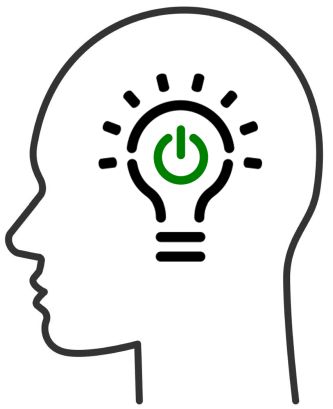
Learning Management System (LMS)
Definitie
Systeem dat communicatie en interactie mogelijk maakt tussen leeraren, leerlingen en leerobjecten in een virtuele omgeving.
Alias:
....
Zie ook:
![]()
The Failure of the LMS
Learning Management Systems zijn geschikt als trainingsmiddel voor grote groepen medewerkers, al zijn ze niet erg effectief. Het is gebaseerd op een gebrekkig model, dat binnen de kortst mogelijke tijd een maximale hoeveelheid informatie verstrekt. Het is voor medewerkers vrijwel ondoenlijk om al deze stof te leren en te onthouden.Het is gebleken dat de traditionele eenmalige trainingssessie – klassikaal of via e-learning – geen effectief middel is om kennis permanent op te nemen. Eenmalige trainingen zijn uiterst vatbaar voor de ‘vergeetcurve3’, een wetenschappelijk bewezen cognitief concept dat inhoudt dat tot 90% van de opgedane kennis snel wordt vergeten, tenzij de stof wordt herhaald.
Bron: Microlearning: Kleine Bites, Grote Impact - De acht succesfactoren van een microlearning aanpak, VDS/Axonify
![]()
Learning Management Systems en Learning Content Management Systems
Een Learning Management System (LMS) is een softwaretool, die normaal gezien web-gebaseerd is en leermomenten plant en opzet. Het 'beheert' ook leerlingen door hun vorderingen en prestaties te volgen en vergemakkelijkt de intereactie tussen leerkrachten en leerlingen en tussen leerlingen onderling.
Een Learning Content Management System (LCMS) concentreert zich daarentegen op de ontwikkeling, het beheer en het publiceren van materiaal dat normaal door een LMS wordt aangeleverd. Het voorziet ook ttols voor auteurs en ontwerpers om effiënt e-learning materiaal te maken.
Een LMS wordt vaak verward met een LCMS. In feite zijn ze complementair. Ze leveren allebei tools om e-learning materiaal te ontwikkelen en ze beheren allebei online leerprocessen. Het is dan ook normaal dat gezocht wordt naar softwareoplossingen die kenmerken van beide bezitten.
Elementen van een LMS en van een LCMS
Een LMS bevat meestal de volgende elementen:
- Tools om gebruikers, gebruikersgroepen, cursussen en leerkrachten te beheren en te volgen
- Een tijdschema en een agenda
- Tools voor het verzenden van berichten naar personeel of leerlingen
- Tools waarmeee personeel en leerlingen berichten naar elkaar kunnen sturen
- Tools voor groepscommunicatie, zoals fora of chat
- Tools voor het beheren van evaluatie of het testen van progressie
- Tools om rapporten af te leveren over al het bovenstaande
Een LCMS bevat meestal de volgende elementen:
- Een gecentraliseerde 'bewaarplaats', waar herbruikbare e-learning materiaal wordt opgeslagen
- De mogelijkheid om externe e-learning materialen te importeren
- Een tool om materiaal terug te vinden
- Tools om materiaal te ontwerpen en te bewerken
- Tools om evaluatiemateriaal te ontwikkelen
- Tools voor 'versioning' (bijhouden van veranderingen) en het tonen van een overzicht van veranderingen
- Ondersteuning voor het publiceren en het wijzigen van webinhoud
- Een dynamische gebruikersinterface
- Een systeem dat metadata en taxonomieën ondersteunt
Zoals je ziet, hebben een LMS en een LCMS elkaar nodig.
![]()
Learning management system
Het LMS-programma vormt een platform dat ondersteuning biedt bij het selecteren, volgen en geven van opleidingen. Een LMS kan gebruikt worden binnen een bedrijf om bij te houden welke werknemers welke scholing hebben gevolgd, volgen, of zullen volgen. Resultaten van de scholing kunnen worden gekoppeld aan bijvoorbeeld functiebeoordelingen. Werknemers kunnen via een LMS soms ook opleidingen kiezen en contracteren. Hierbij niet te verwarren met een elektronische leeromgeving (ook wel Course Management System genoemd). Daar waar een LMS de organisatie van het totale opleidingsaanbod ondersteunt, ondersteunen ELO's de organisatie van het leren binnen een opleiding.
Bron: https://nl.wikipedia.org/wiki/Learning_management_system
![]()
A learning management system (LMS) is a software application or web-based technology used to plan, implement and assess a specific learning process. It is used for eLearning practices and, in its most common form, consists of two elements: a server that performs the base functionality and a user interface that is operated by instructors, students and administrators.
Typically, a learning management system provides an instructor with a way to create and deliver content, monitor student participation and assess student performance. A learning management system may also provide students with the ability to use interactive features such as threaded discussions, video conferencing and discussion forums.
Bron: https://searchcio.techtarget.com/definition/learning-management-system
![]()
What is a Learning Management System?
A learning management system, (LMS) is a software that is designed specifically to create, distribute, and manage the delivery of educational content. The LMS can be hosted as a stand-alone product on the company server, or it can be a cloud-based platform that is hosted by the software firm.
Think of a learning management system as technology that can improve learning, make it faster, productive, cost-effective, and what is more important - trackable.
The most basic LMS contains a core functional platform that enables administrators to upload learning content, deliver lessons to students, serving notifications, and share data with authorized users.
An LMS most often operates inside of a web-browser, behind a secure sign-on process. This gives all students and instructors easy access to courses on-the-go, while administrators and leaders can monitor student progress and make improvements.
Bron: https://www.valamis.com/hub/what-is-an-lms
![]()
What’s an LMS?
An LMS is a platform for digital learning. Its key features can be found in the abbreviation.
L — Learning. With an LMS, you can create a single source of online courses and training materials. This will become a unique source of knowledge in your area, so that you can keep and increase the in-house expertise of your company.
M — Management. You can manage courses and learners, and even improve your own efficiency.
Unlike file sharing services, an LMS is not just a heap of files; on the contrary, it’s a well-organized system where you manage the training process. To start training, simply add employees and assign courses.
Have you recently hired some new employees? Send them invitations to the onboarding training course. Experiencing low sales? Ask your salespeople to practice with virtual clients.
Thanks to features like a calendar, you’ll be able to assign and manage not only online training, but also in-class sessions. In this way, an LMS can be a sort of a to-do app designed specially for eLearners.
S — System. Computer system, to be exact. An LMS automates the most boring and tedious work such as grading, processing statistics, and preparing reports. Plus, you can train your employees without leaving the office, managing all the processes right from your work computer.
In other words, an LMS is like your own online university. The system allows you to store and create eLearning courses, provides learners access to the content, and helps you evaluate the results.
Bron: https://www.ispringsolutions.com/blog/what-is-lms
![]()
What is an LMS?
A learning management system (LMS) is the software used by schools and businesses to manage the delivery of educational or training content.
Bron: https://www.d2l.com/learning-management-system-lms/
![]()
Van LMS tot LCMS
De meeste instellingen voor hoger onderwijs beschikken al enkele jaren over een elek-tronische leeromgeving (ELO) of Learning Management System (LMS). Met een LMS geeft de docent digitale ondersteuning aan het leren van de student: veel aandacht gaat naar de onlinepresentatie van leerinhouden en naar de communicatiemiddelen. Hoe al dat leermateriaal moet worden beheerd en ontwikkeld, is echter weinig of niet uitgebouwd. Zo krijgt een student ... een mooi overzicht van alle cursussen waarop hij is ingeschreven en de berichten die voor hem van toepassing zijn.
Als docent is het echter een hele klus om alle lesmateriaal efficiënt te beheren, zeker als hij verschillende cursussen on line heeft staan.
Een Learning Content Management System (LCMS) komt hier aan tegemoet. Een LCMS is de combinatie van een LMS met een Content Management System (CMS).
Met een CMS wordt inhoud beheerd, met een LMS wordt inhoud gepresenteerd. Een LCMS helpt zowel student als docent in het opzetten van een volwaardige elektronische leeromgeving. Wanneer een docent zijn digitale cursus opbouwt, verzamelt hij allerlei digitaal didactisch materiaal in het CMS. Het materiaal wordt dan op een pedagogisch-didactisch verantwoorde manier verzameld in wat we een 'leerobject' noemen.
Bron: Digitaal leren - ICT-toepassingen in het Hoger Onderwijs, Ivan d' Haese
![]()
Learning Management System
Learning Management System is a broad term that is used for a wide range of systems that organize and provide access to online learning services for students, instnictors. and administrators. These services usually include access control, provision of learning content, communication tools, and organizations of user groups. Learning system(LS) is another tenn used synonymously with LMS.
Kaplan-Leiserson has developed an online e-learning glossary and provides the following definition of LMS: Learning management system (LMS): Software that automates the administration of training eveMs. The LMS registers users, tracks courses in a catalog, and records data from learners; it also provides reports to management. An LMS is typically designed to handle courses by multiple publishers and providers. It usually doesn't include its own authoring capabilities; instead, it focuses on managing courses created by a variety of other sources.
Bron: Innovative Techniques in Instruction Technology, Magued Iskander (red.)
![]()
Kaplan-Leiserson provides the following definition of LMS: LMS (learning management system): Software that automates the admin-istration of training events. The LMS registers users, tracks courses in a cata-log, and records data from learners; it also provides reports to management. An LMS is typically designed to handle courses by multiple publishers and providers. It usually doesn't include its own authoring capabilities; instead, A focuses on managing courses created by a variety of other sources.
Hall (2001) presents this alternative definition: A Learning Management System (LMS) automates the administration of training events. All Learning Management Systems manage the log-in of registers users, manage course catalogs, record data from learners, and provide reports to management. There used to be a distinction between Learning Management Systems and more powerful Integrated Learning Management Systems. That distinction has now disappeared.
The term Learning Management System is now used to describe a wide range of appli-cations that track student training and may or may not include functions such as:
• Authoring
• Classroom management
• Competency management
• Knowledge management
• Certification or compliance training
• Personalization
• Mentoring
• Chat
• Discussion boards.
Virtual Learning Environment (VLE)
Virtual learning environment is a term that to some extent is used instead of LMS.
The two terms have more or less the same meaning, but one may argue that VLE focus less on the features related to the management of learning.
Bandon Hall (2001) defines learning environment this way: A Learning Environment is software designed as an all-in-one solution that can facilitate online learning for an organization. It includes the functions of a learning management system for those courses within the learning environment. but it may not be able to track online courses that were not created within this particular learning environment. A learning environment is characterized by an interface that allows students to register and take courses, staying within that environment for the duration of the course. The program will usually include some self-instructional portions, along with an academic model of a multi-week course. This model is often facilitated by an instructor, where a group can proceed on a week-to-week basis with seminar assignments. Most learning environments also include an authoring capability for creation of additional courses for the instructor.
Bron: Student Entrepreneurship in the Social Knowledge Economy, Door Manlio Del Giudice, Maria Rosaria Della Peruta, Elias G. Carayannis
![]()
An LMS, as defined by Oakes (2002) is “learner and organization focused: It’s concerned with the logistics of managing learners, learning activities and the competency mapping of an organization.” LMS covers a wide range of activities and “in an information age model of education an LMS will assess learner’s current knowledge and skill level, work with teachers and learners to identify appropriate learning goals, identify and sequence instruction appropriate for the individual learner, assess learner performance products, store evidence of attainments, support collaboration and generate reports to provide information to maximize the effectiveness of the entire learning organization” (Watson & Watson, 2007).
An LMS offers a wide range of functionalities and tools to support teaching and learning. It not only delivers contents but also looks after administration, registration, tracking, skills gap analysis and reporting (Gilhooly, 2001). Still there are many universities who are in the process of selecting an LMS. According to McConachie, Danaher, Luck, and Jones (2005) selection of an LMS is the most important factor to decide any university’s online success.
Bron: https://www.researchgate.net/publication/285762359_Learning_Management_Systems_LMS_Inside_Matters
![]()
According to Araújo Júnior and Marquesi (2009) a Learning Management
System, widely spread as LMS and, hence the use of this acronym in this study may be defined, in the user perspective, as a virtual environment that aims to simulate face-to-face learning environments with the use of Information Technology.
In an LMS, the interaction happens through devices that enable communication either synchronously or asynchronously, allowing the creation of different strategies to encourage a dialogue and active participation of students.
According to Lonn and Teasley (2009) Learning Management Systems are web-based systems that enable teachers and students to share materials, to submit and return assignments and to communicate online. Meanwhile Almrashdeh et al. (2011) point out that an LMS is software used to plan, implement and
evaluate a specific learning process.
In LMS, mediation involves both the acquisition of competences and
communication skills of all teachers and students, and a greater concern to create interaction moments and practical application possibilities of collaborative work, with that learning process happening in a participatory manner. For that, the teacher relies on communication devices, such as chat rooms, forums, blogs, video blogs (Souza, 2005; Sartori & Garcia, 2009; Rosini, 2013). To these authors, it is necessary to consider that an LMS must seek to get the best advances in technology available today, for reasons of
efficiency and for enabling the maximum degree of interactivity and communication among users. Learning and collaborative work have become fundamental and technological advances should lead to the achievement of high interaction levels.
The first LMS appeared in the nineties, along with the first web browsers.
According to Silva (2013), Learning Management Systems are often criticized, due to the belief that these technologies simply virtualize non-virtual classrooms. However, according to the author, they are not the main problem, but the way they are designed, structured and crafted. Furthermore, the use of an LMS requires careful studies particularly in relation to educational and financial aspects.
Bron: https://www.researchgate.net/publication/309542516_Learning_Management_Systems_LMS_and_e-learning_management_an_integrative_review_and_research_agenda




















